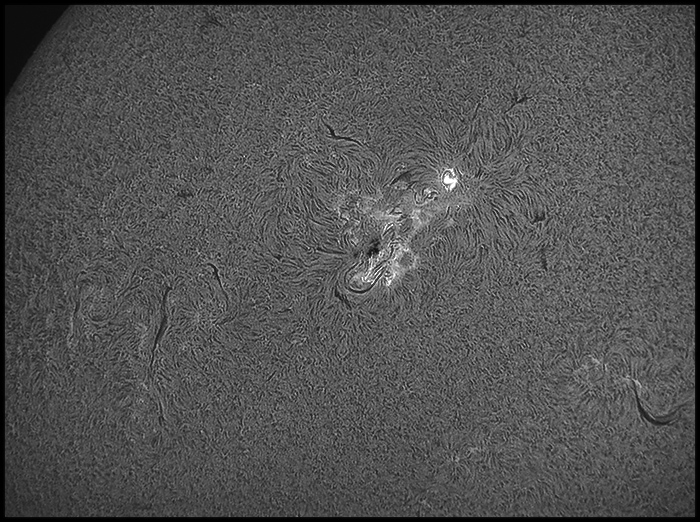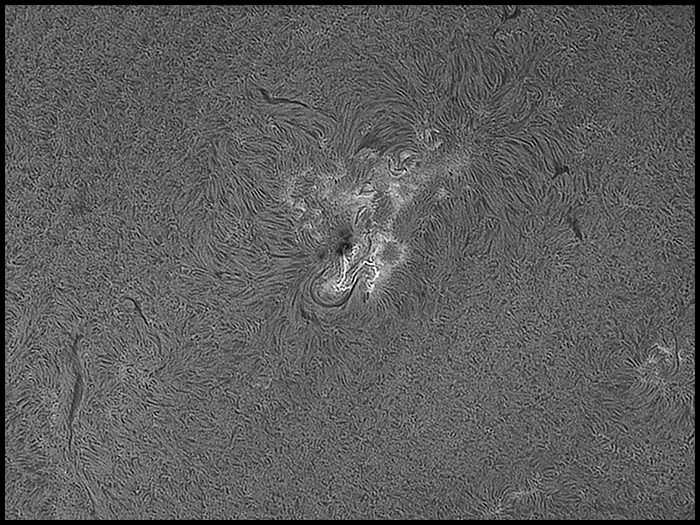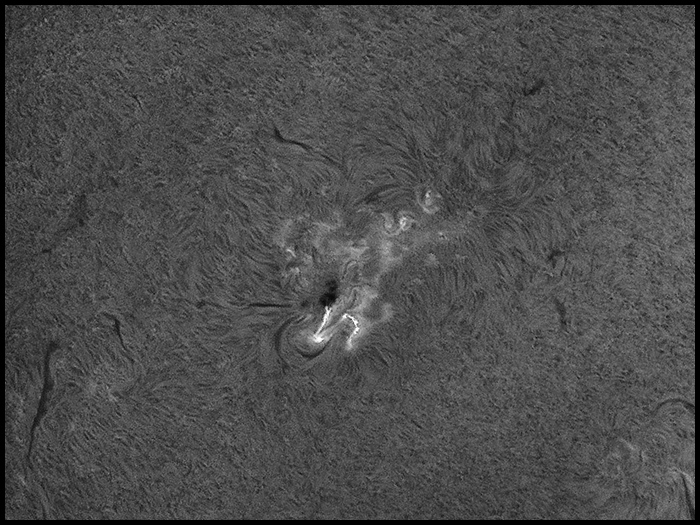|
I tried selecting the best 50% of some 300 frame clips and the best 40% of some 400 frame clips. 150-160 frames is great for suppressing noise. There's going to be a balance to strike between electronic noise and noise from poor images. The netbook will buffer 400 frames, so why not start there? The improvement from tossing the poorer frames is dramatic. First thing this morning, I watched a C-flare light up in AR1476. More followed. Sometimes the big umbra was surrounded by a ring of bright B and marginal C activity, like a firey reef surrounding a plasma atoll. Someone on Spaceweather yesterday compared watching flare activity around AR1476 to watching a lightning storm. Just so. Later in the day, after I went to the longer focal effective focal length, a couple of longer plasma channels lit up in the brightest flare of my session, a longer duration C5 that flashed along a couple of very long paths.
C-flare (upper right)
400 x 10ms 6db
AR 1476 at longer EFL
Then I tried to connect the netbook in the yard to the router in my office with an Ethernet cable. No luck so far. I snapped the tab off one end of the cable (the long, "inside" end). Tried it firmly inserted and with a replacement RJ45. I saw "connected" once, for a second or less, which makes little sense. Anyway, no luck. I brought the netbook inside and hooked it to the router with a shorter ethernet cable to be sure the scheme would allow tethered remote control. That worked. There's still a wifi-step between the router and the desktop but even so, I saw 5-7x faster file transfers. So it's worth pursuing this connection for video, but it's not a world of difference for control and it seems inconsequential for slower-paced deep-sky use.
This image was an experiment that I thought was acquired through the wire, but was really captured -- like all the others -- over the wifi connection. It's included here to say, "No matter how crappy the seeing is, it's worth taking the shot if something interesting is happening," because you just can't imagine how hopeless this looked on the screen, and yet, there it is just about as good as any of them. Later in the evening, I meticulously examined the original RJ45 plug and wired another new one. Still no luck. Maybe I snapped something while working kinks out and passing it through the too-small conduit from the inside of the basement to the great world beyond. Maybe it's just lousy cable. Maybe, as seems likely, you just don't get 150' of good cable for $7.99. I ordered a new cable from Cables to Go and will give that a try next week. I'll leave this one in place as a good cable pull.
5/15/2012. The Cables to Go 150' Cat5 cable works like a charm, at least when tested indoors. It runs from the router beside my desk to the telescopes in the backyard. Very pliable compared to the RiteAV mess it replaces. Just a hint of clear skies would be enough for some informative tests.
:: top ::
|
© 2011, David Cortner




